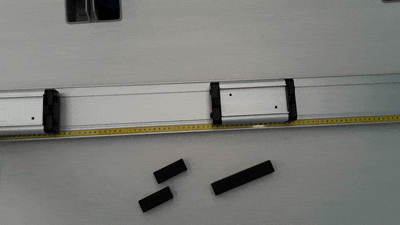Inelastic Collisions
Objectives
- Track the motion of two objects of equal mass that stick together after colliding.
- Show that the total momentum of the two carts before and after colliding is conserved.
- Measure the kinetic energy lost in the collision and show that it agrees with the theoretical amount.
- Show the same is true for two objects of different mass.
Resources
- Flat track
- Carts with hook-and-loop (e.g. Velcro) bumpers
- Mass blocks for carts
- Digital scale
- Digital camera or phone
- Tracker motion capture software
Background
Linear momentum is the product of the mass and velocity of an object. Linear momentum is also a conserved quantity, meaning that if a closed system is not affected by external forces, its total linear momentum cannot change.
If kinetic energy is lost in a collision between objects, the collision is described as inelastic. This is usually due to nonconservative forces between the two objects, such as heat or sound, or mechanical forces causing permanent deformation of one or both objects. The maximum kinetic energy loss results when the objects remain stuck together after the collision.
In the case of an object of mass m_1 with kinetic energy K_i and colliding with and sticking to a stationary object of mass m_2, it can be shown that the final kinetic energy (K_f) is K_f = K_i\frac{m_1}{m_1+m_2}
Method
Place two carts on the track. Ensure that the ends of the carts with magnets are not facing each other. Collide two carts on the track as shown above. Record a video of the motion and determine the initial and final velocities of both carts using Tracker.
Analysis Questions
- What type of forces do the carts exert on each other during the collision? Are they conservative or nonconservative, and how do you know?
- Are the mometum and kinetic energy conserved in both collisions above? Explain any sources of discrepancy.
